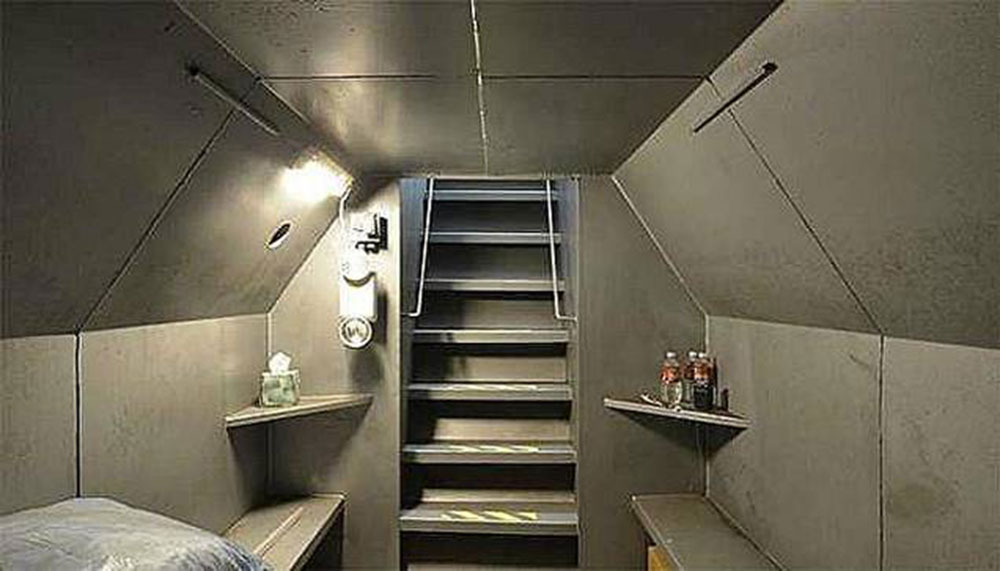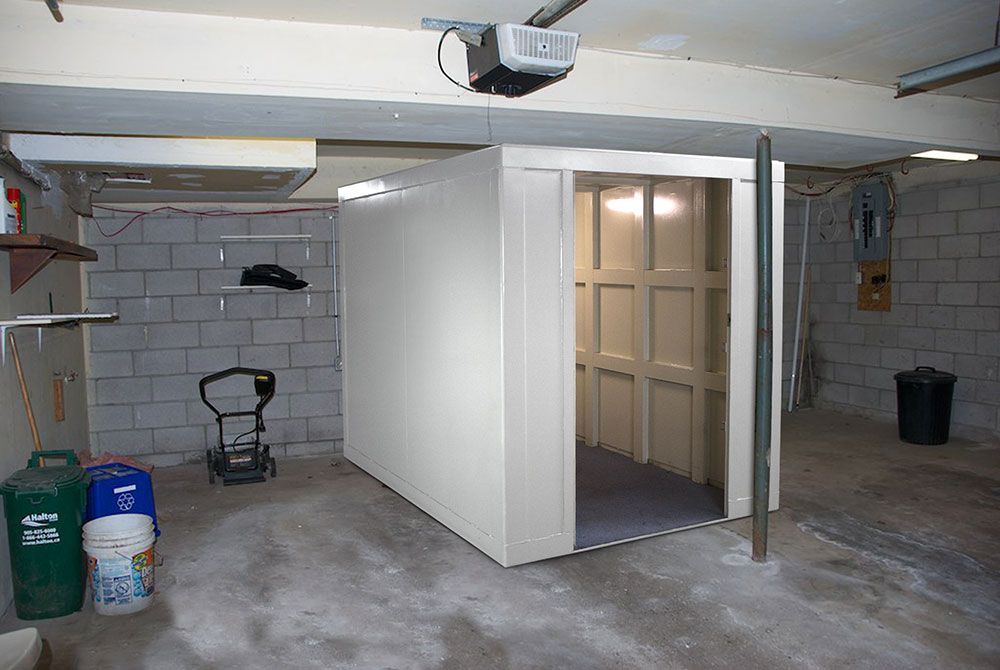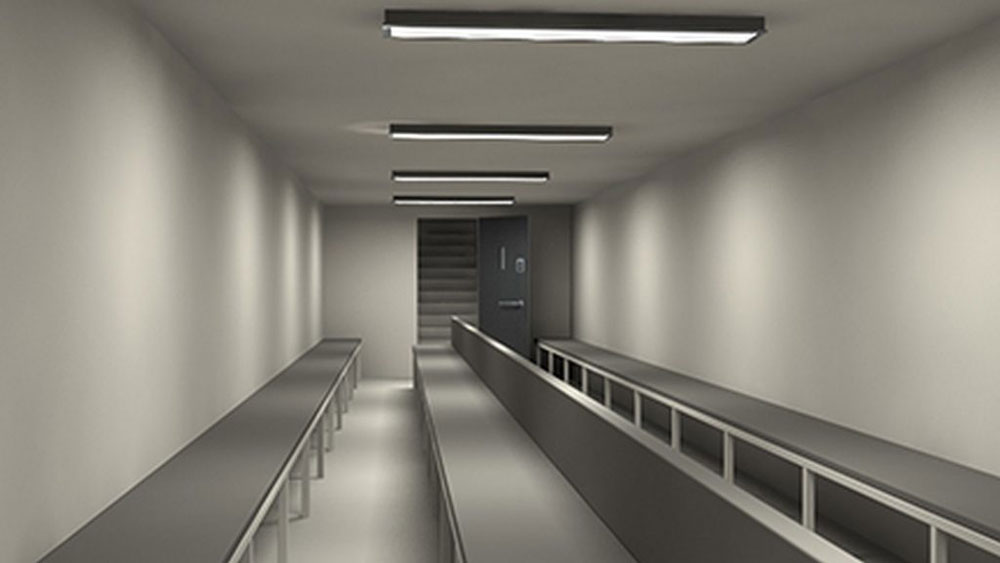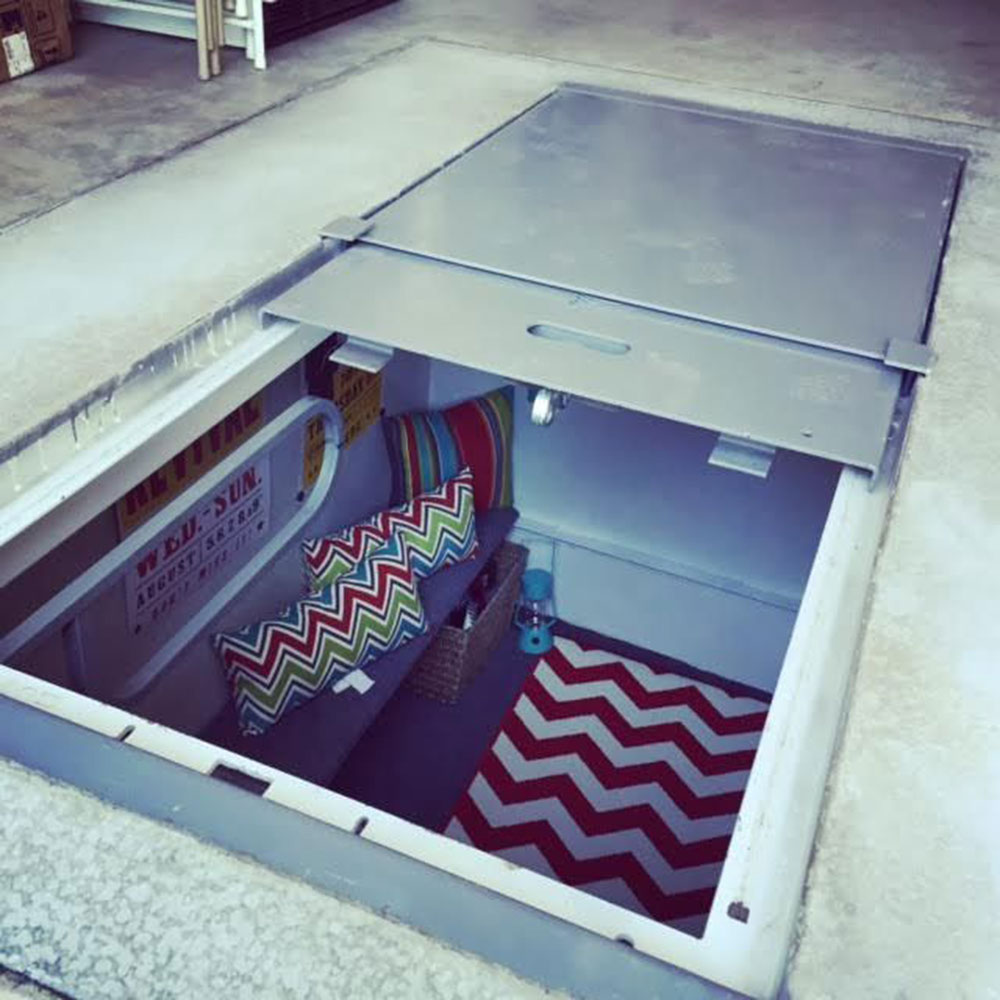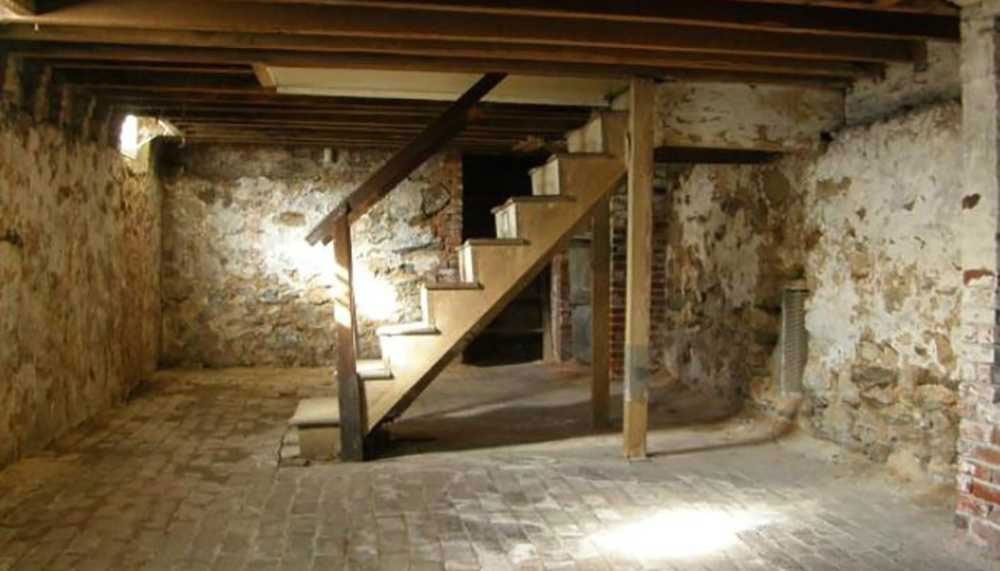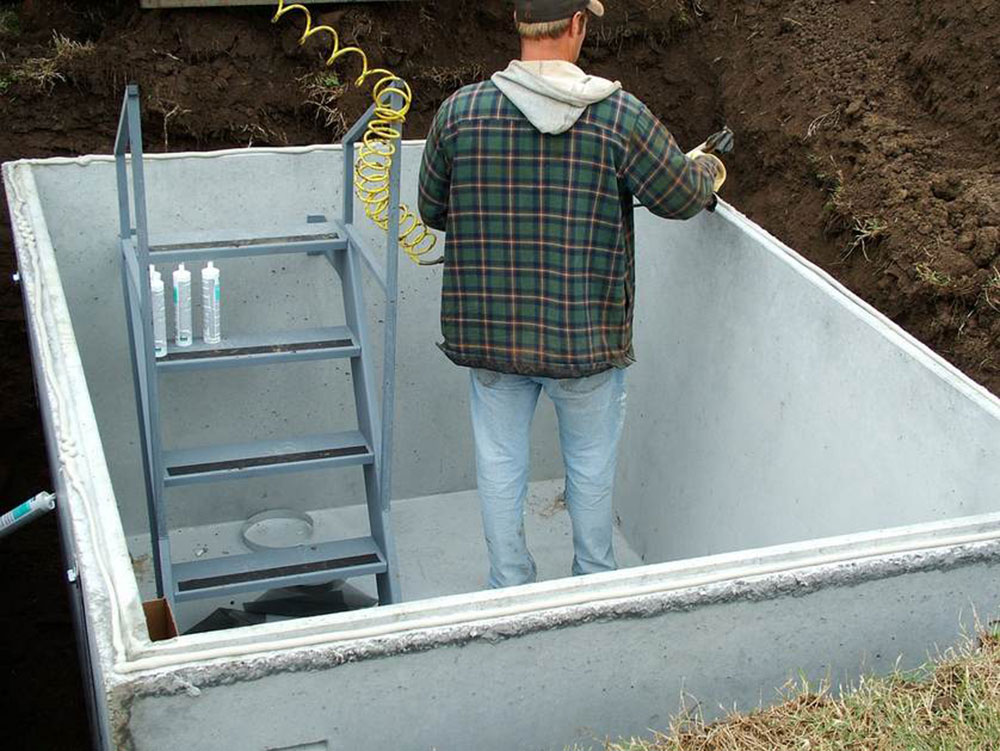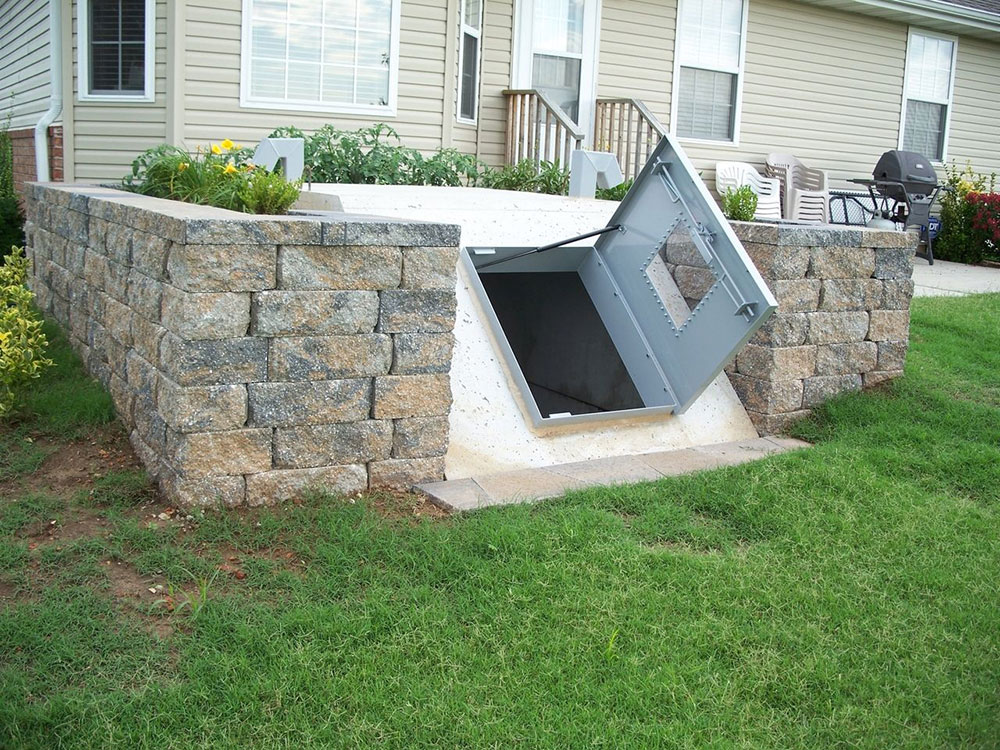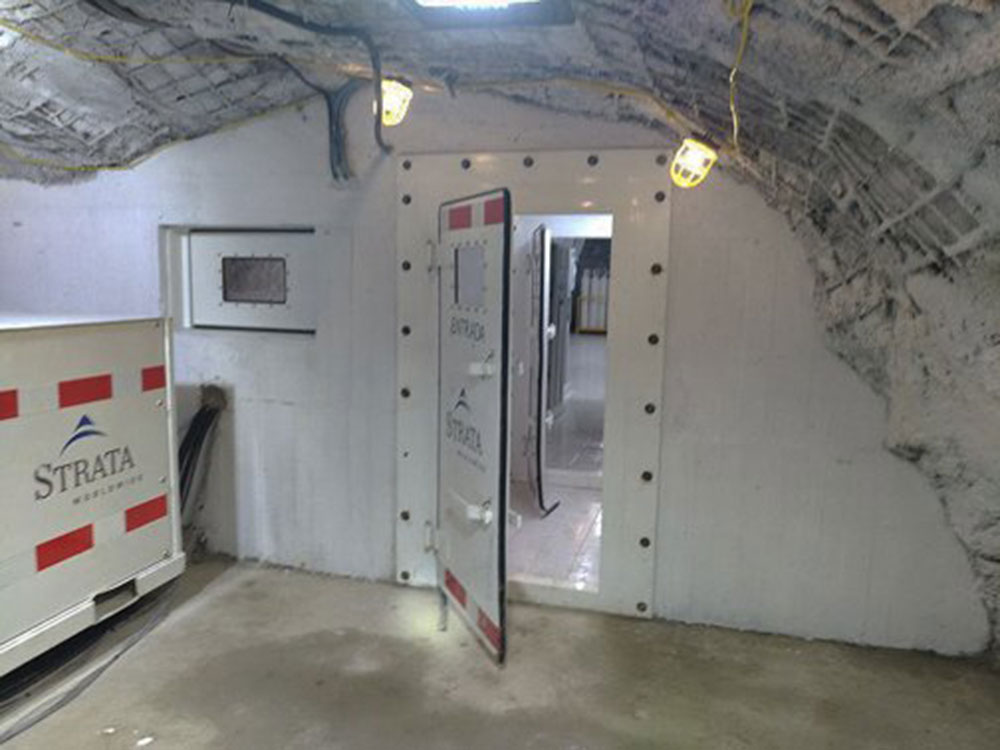Advertisement
Ever wonder if your basement could be more than just storage space? Imagine transforming it into a sanctuary that could stand steadfast against the unforeseen, like a nuclear fallout. It’s not just for Cold War-era fanatics anymore; in our unpredictable world, a fallout shelter right under your feet could be the ultimate peace of mind.
Here, you’ll embark on a journey to learn the ins and outs of underground bunker construction, tailored to the very foundation of your home. From disaster readiness shelter design to selecting radiation shielding materials, you’re about to become versed in an essential survival skill. You’ll not only become familiar with emergency shelter plans but also understand how to equip your safe haven with fallout shelter supplies and air filtration systems.
Together, we’ll delve into transforming your subterranean space into a reinforced shelter, making sure you know exactly how to achieve a secure and livable habitat. Your basement’s potential is vast, let’s unlock it.
It never hurts to have a safe room
First, we must understand what a safe room is. This, as the name implies, is a room designed to protect people against different contingencies. Safe rooms are common in places susceptible to tornadoes and hurricanes, but can also be found in extreme weather regions.
According to the Federal Emergency Management Agency (FEMA), a room is considered safe when it provides almost absolute protection, preventing the death or injury of its users.
The construction of this type of room is thanks to the study carried out on the different natural disasters. If the stipulated regulations are followed, it should be able to withstand even the greatest dangers.
Even if we never use it, having a room that meets the parameters to be safe always provides relief.
The Types of Safe Rooms
We can differentiate two types of safe rooms depending on the people who can access them. The first type is the public shelter, which is built-in busy areas and to which anyone can enter in case of emergency.
The second type are private shelters. Individuals or families build these for personal use. Usually, these types of shelters are located in a basement to build walls of considerable thickness.
A basement fallout shelter requires a moderate budget, both to build it and to supply it. The price will also be influenced depending on whether you need to build a new basement or if all you will do is recondition the one you already own.
How to build a fallout shelter? You must first know how radiation works. This is like heat or UV rays; although we can’t see the, we feel the effects they have on us. However, they cannot pass through solid objects directly, but instead transmit their energy by irradiating them, which causes them to heat up.
Nuclear radiation works similarly, radiating what it reaches to continue its journey. This can be avoided if the distance between the irradiated point and the other end is wide, or if there are enough things that receive the radiation until it dissipates.
Therefore, in the case of a shelter, the thicker the wall, the less chance of radiation reaching the center of the room.
Once we know the construction requisites, we must prepare to supply the shelter. In case of emergency, you will not be able to leave it for a time. Although, there is no exact calculation when it comes to radiation, at least in the case of natural disasters the recommendation is to store 3.5 gallons of water per person to be able to endure two weeks.
In contrast, there is not much problem if a person does not eat for two weeks, so food rations are not as important (although it does not mean that you must exclude them).
The best option is to hide underground
When it comes to protection, the best thing is an underground shelter. We explained that it is because we can build thick walls. Today, threats are increasingly destructive, so we cannot afford to rehearse if we can survive with shelter on the surface.
How to build a fallout shelter in your basement? To start, like any underground construction, we must ensure that it does not have water leaks. It is recommended that the basement or cellar of our house be located on a slope in the opposite direction of the room, which will push the water.
If the adjacent terrain is already prepared, the next thing is to determine if the basement lining is strong enough. Although the ground works well as a protective barrier in hurricanes, it is not as effective when it comes to nuclear radiation.
It is advisable to reinforce all the basement walls (including the ceiling and floor) so that they have an additional thickness that allows us to be safe from radiation. This involves the removal of land, and perhaps the extension of the foundations of your home (in case of projects that cover the entire basement).
Our personal shelter
Do you want to know how to build a cheap home fallout shelter? Then you reached the appropriate section. The secret is to know that you don’t need to condition your entire basement to create an efficient shelter. If you only want to protect a small group of people, you can designate a 50-square-foot space inside your basement to build a small shelter for five.
The location of this space is crucial. Ideally, it is located in a corner away from the perimeter walls, so that there is an additional distance to protect it. You should also select the area that is most buried since areas that are above ground level are more vulnerable.
The shelter will have a triangular shape. The easy way to do this is simply by measuring 10 feet on each wall starting from the corner. Draw a line to join the resulting points, and you will have the area that is theoretically suitable against nuclear disasters.
The coating of the corner walls can be done with masonry, so you do not have to spend high amounts of money to increase their resistance factor. Additionally, it is recommended to insulate the ceiling and floor.
For additional protection, you should stick as much as you can to the corner and floor. That’s why it is recommended that you sit or lie as much time as possible inside your “DIY fallout shelter”.
Perform a preliminary inspection of your basement
Before you start supplying your basement for emergencies, you must be sure that it is strong enough in its structure not to give in to disasters. The roof and floor are the most fragile points, so it is recommended to reinforce them.
You should also inspect that the basement does not show signs of moisture or mold. These agents are harmful to health if we breathe them for a long time. Since moisture is a recurring problem (which causes the birth of fungi), it is recommended to have some method to control it in case it appears while we take shelter in our fallout shelter.
We shouldn’t die due to a lack of oxygen
Something that people often forget in underground construction is ventilation. In a basement, a small system is enough, since its use is for short periods. However, the same does not happen with a fallout shelter.
Now that you know how to build a fallout shelter in your basement, you mustn’t forget to install adequate ventilation so as not to run out of oxygen. A person requires at least ten cubic feet of oxygen per minute in cold regions, while in hot conditions, the amount increases to thirty cubic feet per minute.
Believe it or not, oxygen does not require a complex purification process in the case of radiation. The most basic designs are enough to purify the air.
In fact, as in fires, air filtration can be done using a damp cloth. Also, consider that there must be openings for carbon monoxide to leave the shelter or you could end up poisoned. These, however, cannot be extremely large to prevent radiation from entering.
Although the shelter must have openings for air to circulate, the remaining basement construction must be airtight.
Finally, if you want to be sure that you will not lack oxygen, install air purifiers and place some plants to absorb carbon monoxide (without exaggeration, since these can also be deadly in enclosed spaces).
FAQ about building a fallout shelter in your basement
Is Building a Fallout Shelter in Your Basement Legal?
Absolutely, but you gotta check in with local laws. There’s a mix of building codes for safety shelters you’ll wanna stick to. Zoning laws, permits, you know the drill. Keep it above board, or you’re asking for a headache.
What Materials Do I Need for Radiation Protection?
Thick walls, my friend. Think radiation shielding materials like lead, concrete, or steel. Don’t skimp on quality here. You want your shelter to be your nuclear fallout preparation MVP. It’s all about keeping that radioactive stuff out.
How Deep Does My Basement Need to Be?
Depth is key for minimizing exposure. A good rule of thumb? Aim for at least 10 feet underground. It’s about balancing depth with practicality, so your DIY fallout room isn’t just safe, it’s useable.
What About Air Filtration in the Shelter?
Air’s a big deal. You’re not just keeping out the bad stuff, but gotta breathe, right? Invest in a robust air filtration system for basements. It should handle toxic particles. Think long-term survival, not just a storm cellar.
Can I Build the Fallout Shelter Myself?
Sure, if you’re the handy type. It’s a serious DIY project, with underground bunker construction and all. Be prepared to learn a lot about emergency shelter plans and get ready to roll up those sleeves. But safety first – don’t take shortcuts.
How Should I Stock My Fallout Shelter?
Stock it like you’re not coming out for a while. Think long-term food and water storage, hygiene supplies, medical kits, and don’t forget entertainment. Rotate those fallout shelter supplies regularly to keep things fresh and functional.
Does My Shelter Need Electricity?
Wouldn’t hurt to have some comforts, right? Off-grid options like solar panels or generators? Golden. Wire it up for emergency preparedness lights, communication, and essential appliances. Mind your energy sources and backup plans.
What’s the Ideal Size for a Fallout Shelter?
Roomier is generally better. Big enough for your crew to not go stir-crazy. A survival shelter design that’s spacious enough for living quarters, supplies, and a little elbow room is ideal. Think about “living” not just “surviving”.
How Can I Ensure Water Supply to My Shelter?
Two words: Water storage. Big tanks or barrels, renewable sources if possible. Maybe even a purification system, ’cause you never know. Hydration is key in a disaster readiness shelter.
What Are the Essentials for Fallout Shelter Structural Integrity?
Rebar-reinforced concrete for strength, a sturdy door – bank vault style. Construction techniques need to meet civil defense shelter standards. Think blast-proof basement modifications and make it earthquake-shakeable. Peace of mind comes with knowing you’ve built a fortress.
Conclusion
So, we’ve tunneled through the nitty-gritty of how to build a fallout shelter in your basement, breaking ground on everything from getting the dig down right, to making sure the air you breathe won’t do you dirty. You’ve got the blueprint for DIY fallout room success, marrying disaster readiness with some cozy home comfort.
- Wrap your head around radiation shielding materials**; they’re the real MVPs here.
- Don’t skimp on that air filtration system either; it’s like the lungs for your underground haven.
- Emergency shelter plans? Check.
- Stocked-up fallout shelter supplies? Double-check.
You’re all set to turn that underused space into a bunker that’d make any survivalist nod in respect. You’ve leveled-up from home security upgrades to full-on safe zone architect. Next time someone brings up basements at a party, you’ll have way more to talk about than just mold prevention and last year’s holiday decorations. Here’s to building smart, safe, and secure – one reinforced concrete slab at a time.
If you enjoyed reading this article about how to build a fallout shelter in your basement, you should read these as well:

